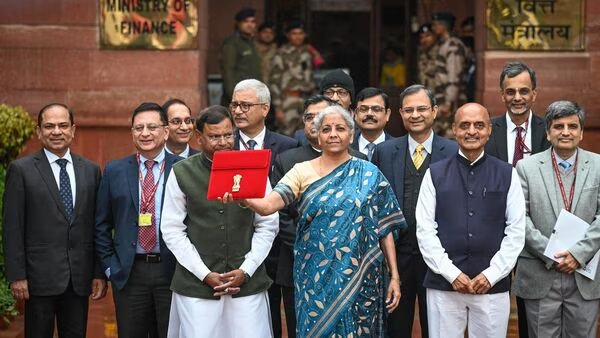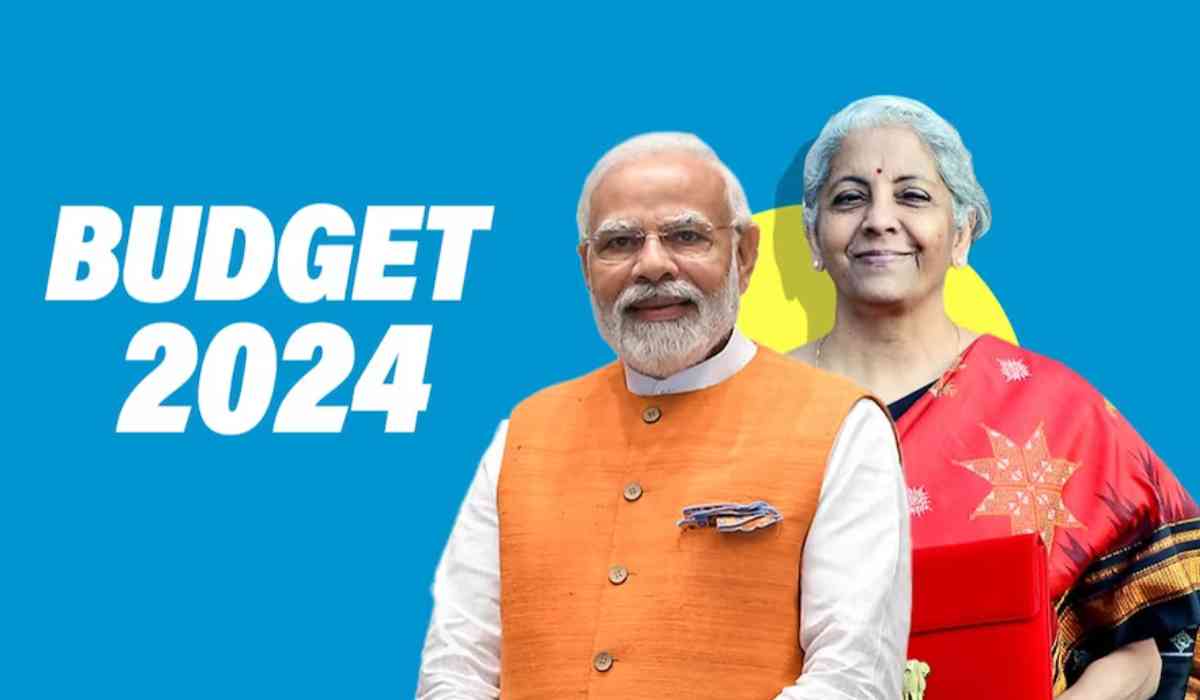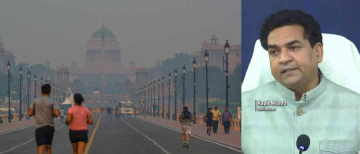This was an election move as well as a vision document for the next five years. Here is all that you need to know about the interim budget 2024. Not an out-and-out election pitch, but, it was almost as if they had accepted that they were coming back. “We will provide a new budget in July 2024”, said the Honourable Finance Minister Nirmala Sitaraman. Here are the budget updates from the very beginning of what Srimati Nirmala Sitharaman presented today. She began with the updates on the year thus far. “Sab ka saath, sab ka vikaas” was the mantra when the government began in 2014. The idea was to build an Atma Nirbhar Bharat to ensure necessities to all citizens of the country through various programs and schemes for the holistic welfare of the poor and marginalized sections of society.
The inclusivity
The Finance Minister predominantly focused on how India as a nation has been inclusive in the past decade, speaking about the same she said, “In the second term, our government under the leadership of the Honorable Prime Minister doubled down on its responsibilities to build a prosperous country with comprehensive development of all people and all regions. Our government strengthened its mantra to ‘sab ka saath, sab ka vikaas, and sab ka vishwas’. Our development philosophy covered all elements of inclusivity, namely social inclusivity through coverage of all strata of the society and geographical inclusivity through the development of all regions of the country.”
The inclusivity angle was fairly early in the picture, but inclusivity just does not include the LGBTQIA community. There were certain things set for the transgender community. But apart from that, there were other things that inclusivity comes into.
The National Legal Services Authority, NALSA, versus the Union of India case in 2014, recognized transgender people as a third gender and affirmed their fundamental rights. The Transgender Protection of Rights Act, educational institutions, and sports institutions are being reaffirmed to create a more inclusive environment, and transgender-friendly health services, all of these have been reforms that have come through in the last couple of years, but it's still not there. Hopefully, something that comes through in a slightly more target-oriented manner, just like there are targets in other schemes and the deployment of it would be a little bit more actual on the ground versus the current half-hearted manner in which it is being implemented.
The Divyangs reforms, there have been a lot of Divyangs parks that have been launched recently, facilities for Divyang athletes. Divyang is specially abled. India's participation in the Paralympics, Maharashtra has a whole Divyang department. The Rights of Persons with Disabilities Act 2016, which broadened the scope of disabilities, increased the reservation quota in government jobs for the specially-abled and educational institutions, the reservations being introduced over there. But can more be done? We've started popularizing the word, but there needs to be more translation of it all for us citizens. The specially-abled should start gradually becoming normal.

Image Source: Mint
“Sab ka saath, Sab ka vikaas”
This was the mantra of the government when they began in 2014. The idea was to build an ‘Atma Nirbhar Bharat’ to ensure necessities. The focus was ‘gareeb’, ‘mahilaayen’, ‘Yuva’, ‘anna daata’(farmers). Houses under the PM Awas Yojana, the Jal Jeevan Mission that gave out water connections, the Jan Dhan Yojana which got crores of bank accounts opened, the PM Kisan Yojana which gave out direct benefit transfer to farmers, the PM Ujwala scheme for free gas connections and LPG subsidies. All of these came under this program for the poor. The idea was the holistic welfare of the poor and free rations for 80 crore people. Now this came under the Pradhan Mantri Gareeb Kalyan Ann Yojana, (PMGKY) which was launched in April 2020. The government states that 25 crore people got freedom from poverty in the last 10 years with free rations coming to over 80 crore people under this scheme primarily. The idea of the scheme was that no one goes hungry especially targeted towards the vulnerable groups under the Antiyodaya Ann Yojana and the priority households(PHH) scheme which was identified under the NFSA.
“Geographical inclusivity through the development of all regions of the country. With the whole-of-nation approach of sab ka prayas, the country overcame the challenges of the first-century pandemic, took long strides towards ‘Atma nirbhar Bharat’, committed to panch pran and laid solid foundations for the ‘Amrit kaal’. As a result, our young country has high aspirations, pride in its present, and hope and confidence for a bright future. We expect that our government, based on its stupendous work, will be blessed again by the people with a resounding mandate.”- Nirmala Sitaraman
Benefits from the scheme
The honorable Finance Minister emphasised on the benefits that were incurred by the citizens from the schemes “Direct benefit transfer of 34 lakh crore rupees from the government using PM Jandan accounts has led to savings of 2.7 lakh crores of rupees for the government. These savings have been realized through the avoidance of leakages prevalent earlier. The savings have helped to provide more funds for Gareeb Kalyan. PM Swanidhi has provided credit assistance to 78 lakh street vendors. From that total of 78 lakh street vendors, 2.3 lakh have received credit for the third time. PM Janman Yojana reaches out to the particularly vulnerable tribal groups who have remained outside the realm of development so far. PM Vishwakarma Yojana provides end-to-end support to artisans and craftspeople engaged in 18 trades. The schemes for empowerment of divans and transgender persons reflect the firm resolve of our government to leave no one behind.”
Finance Minister @nsitharaman Ji is presenting the Interim Budget in Parliament. https://t.co/j9A9ridX66— Narendra Modi (@narendramodi) February 1, 2024
Farmers the “Anna Daata”
Talking about the agriculture industry, Nirmala Sitaraman mentioned “Farmers are our Annadatta. Every year under ‘PM Kisan Samman Yojana’, direct financial assistance is provided to 11.8 crore farmers, including marginal and small farmers. Crop insurance is given to 4 crore farmers under ‘PM Fasal Bhima Yojana’. These, besides several other programs, are assisting Annadatta in producing food for the country and for the world. Electronic National Agricultural Market has integrated 1,306 crore farmers.”
As mentioned by the Finance Minister 4 crore farmers have come under the ‘PM Fasal Bhima Yojana’. This is a crop insurance scheme. It provides financial assistance to assuage farmers when their crop fails. There are uncertainties in agriculture, including adverse weather conditions, pests, diseases, and things that could mar the produce of the crop. So farmers who are working towards a crop feel a little bit more confident when they know that their crop is insured against these kinds of vagaries of nature and manmade. It also ensures that the financial burden on the farmers, since they only have to pay maybe one and a half to two percent of the total premium during the Rabi and Kharif seasons, it ensures that the burden on them is a little bit more reduced. In fact, over the last couple of years, the government has also introduced tech in agriculture with remote sensing technology, with smartphones and other tech to protect the interests of the farmers who make genuine claims versus those who are perhaps trying to cheat the scheme. Essentially what it does is reduce the claim settlement time.
Fostering the education system
With the largest number of youth population in the country, the finance minister didn't shy away from focusing on the emerging educational landscape of our country.
“Our prosperity depends on adequately equipping and empowering the youth. The National Education Policy 2020 is ushering the transformational reforms. PM schools for rising India, PM Shri, are delivering quality teaching and nurturing holistic and well-rounded individuals. The Skill India mission has trained 1.4 crore youth, upskilled and reskilled 54 lakh youth, and established 3000 new ITIs. A large number of institutions of higher learning, namely 7 IITs, 16 IIITs, 7 IIMs, 15 AIMs, and 390 universities have been set up.” - Nirmala Sitaraman said.
India emerging as a Start-up nation
“PM Mudra Yojana has sanctioned 43 crore loans, aggregating to 22.5 lakh crores of rupees for the entrepreneurial aspirations of our youth. Besides that, fund of funds, Startup India and Startup Credit Guarantee schemes are assisting our youth. They are also becoming Rosgar Dapa.”
The Mudra Yojana that the Honorable FM spoke about is a scheme that was launched in 2015 by Prime Minister Narendra Modi. The aim was to promote the entrepreneurial spirit within the country. Under this scheme, essentially, anyone who's looking to start a business can get loans from the bank in three categories, ‘Shishu’, ‘Kishore’, and ‘Tarun’. The Shishu loans are up to about 50,000 rupees, Kishore loans are up to about 50,000 to 5 lakhs and Tarun loans are from 5 lakh to 10 lakh. Individuals, entrepreneurs, and small business owners who are involved in manufacturing, service-oriented businesses, or trading businesses can apply under the Mudra loans. These loans are collateral-free, which means one doesn't have to provide any kind of security to the bank to avail of the loan.
As the government looks ahead, the interim budget reflects a commitment to building on past achievements and addressing existing challenges. With a renewed focus on inclusivity, prosperity, and youth empowerment, the vision for the next five years seeks to realize the aspirations of every citizen toward a brighter future.
You may also watch the YouTube video here.
Image Source: Business Today
Ⓒ Copyright 2024. All Rights Reserved Powered by Vygr Media.






















